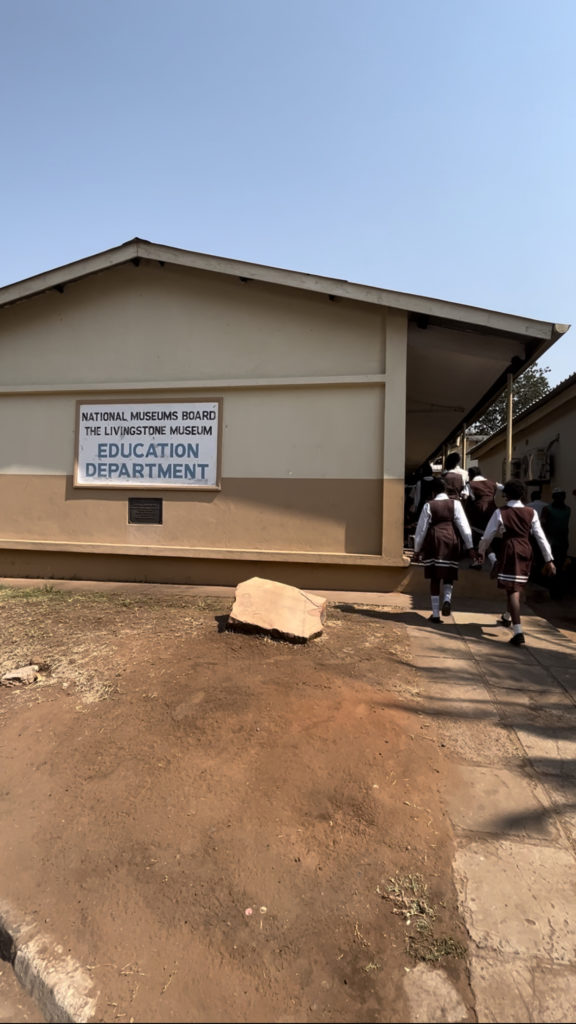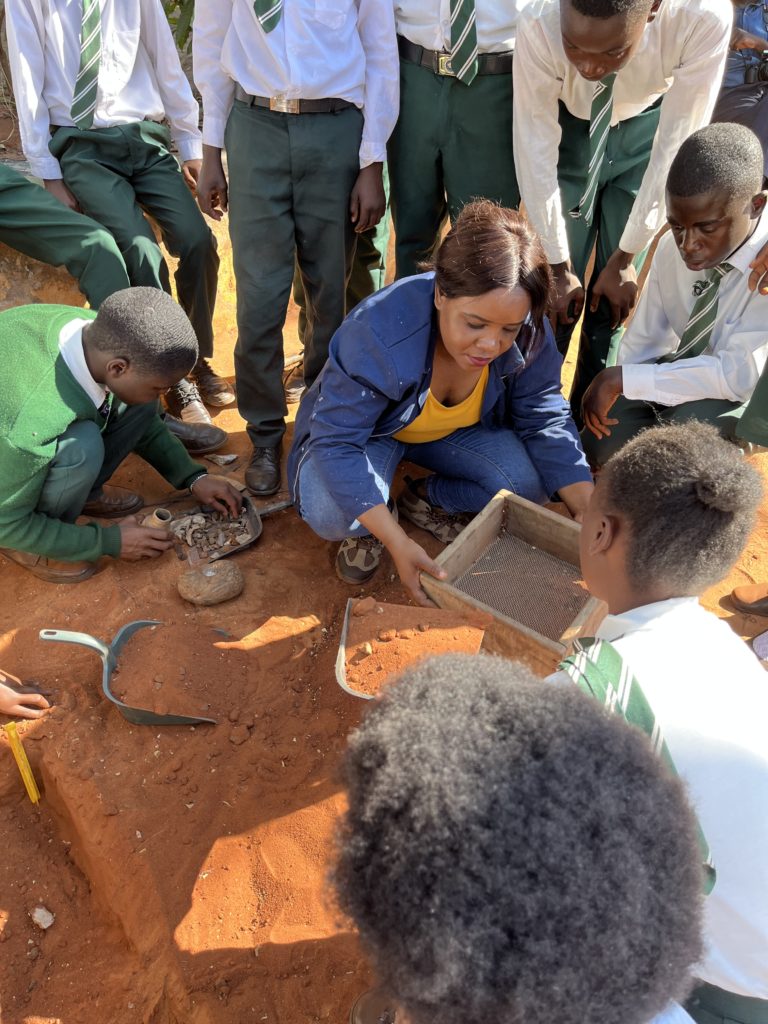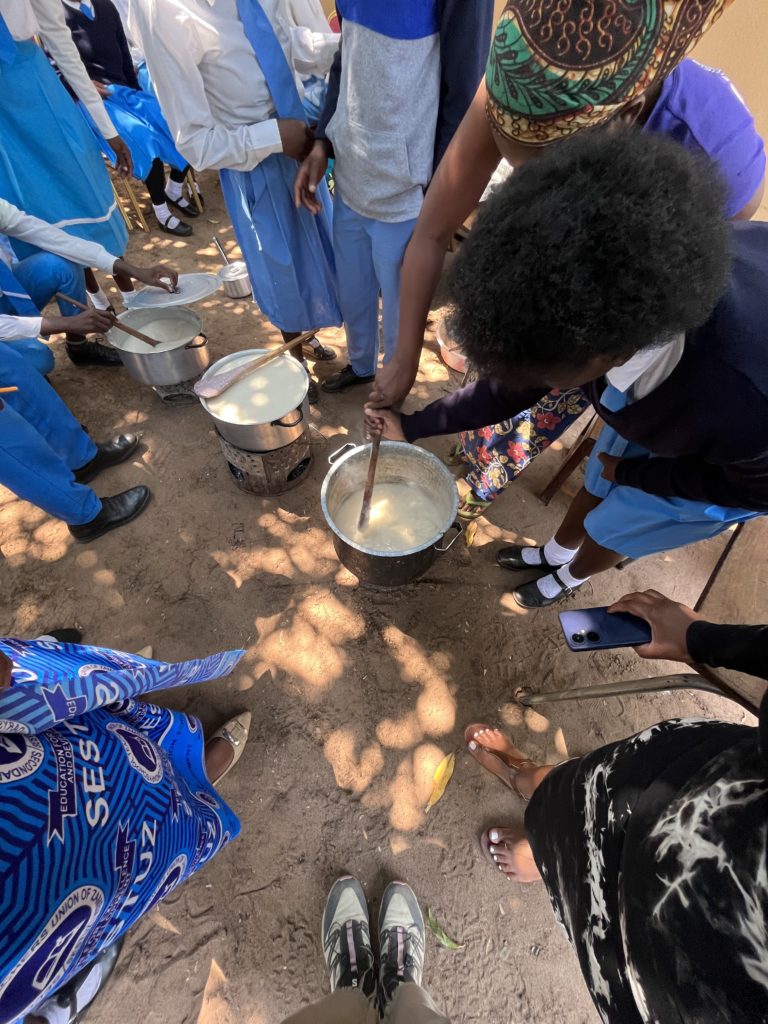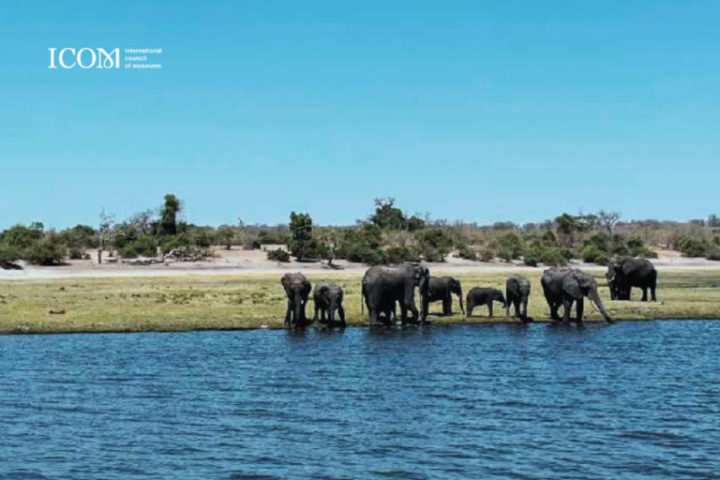Livingstone Museum, Livingstone, Zambia – Berlin State Museums, Berlin, Germany
How can museums as places of cultural history remain relevant for the people in the 21st century? What role does museum education play in the preservation of (intangible) cultural heritage?
Before I come back to these questions, I would like to give a short insight in my 21-day stay as a Guest Researcher at the Exchange Programme between Zambia and Germany.
I would like to thank all the people involved who made this year’s Exchange Programme happen; especially thanks to the team of the Livingstone Museum who put together an extraordinary programme with deep insights in the museum tasks in Livingstone.
I was not just warmly welcomed at all activities and by all members of the Museum, but also integrated in all planned Museum activities during my stay.

Educational Programmes
The Livingstone Museum, „established in 1934, is one of five national museums in Zambia operating under the National Museums Board within the government Ministry of Tourism and Arts. It is the largest and oldest Museum in Zambia and located in the heart of Livingstone, the home of the Victoria Falls. It holds internationally significant collections in Zambian archaeology, history, culture and natural history and provides an important insight into the natural and cultural heritage of Zambia.“
The Department of Education, directed by Chipo Chilala Mwansa, holds a colourful variation of different activities and learning formats for different user groups. The content of these activities is adapted to changing needs of the invited communities and visitors. It varies from different intensity and refers to varying matching subjects in the Museum and its exhibitions.

The mission statement of the Department depicts:
„The museum has a vibrant Education Section vested with the duty of ensuring that heritage information is disseminated to the public for their enjoyment and education. The Section arranges guided tours of the Museum for school and college groups. It also offers talks and presentations on particular topics such as Zambian history, the life and travels of David Livingstone, animal behaviour, biodiversity and many others.“
Why am I quoting the tasks of the Education Department? Because the types of educational programmes in the Livingstone Museum is a figurehead for cultural education worldwide and it’s giving a perfect introduction into the questions I stated in the beginning.
The list of programmes offered is long and ranges from non-personal to long-lasting personal collaborations, such as: Workshops, guided tours, interpretation classes, outreach programs, collaborations, school lectures, public forums, debates, cultural competitions, road shows and mobile exhibitions, radio shows, inclusive education, independence activities and special programmes for exhibitions.
The focus of my Guest Research stay was to get to know the current programme running at the Livingstone Museum as well as to discuss formats, methods and central questions of current educational work.
Educational activities as preservation of intangible cultural heritage
The educational work in the Livingstone Museum is oriented to the ICOM museum definition and tasks: to research, collect, conserve, interpret, exhibit and educate.
Two examples of activities that show how education personnel in museums with or without objects can cover the tasks are mentioned below:

“Excavation activities – on how archaeologists work“ is a workshop that I attended which shows in several steps, how museum objects are discovered in a hands-on way (Illustration 1). The participants learn about different tasks of museum work; how to find and collect objects from past times. How to start research and locate them correctly in historical time, and in comparison, to objects already exhibited in the museum, which information is needed for other researchers and visitors – which promotes thinking of the transfer of knowledge.

The annual cultural competition combines especially the field of preservation and conservation of intangible cultural history and research and education (Illustration 2). With a lot of coordination work, rehearsing and research about traditional dances and costumes from different tribes and areas around Zambia upfront, the cultural competition brings together between ten and fifteen schools in one day. At this event the main focus lies on the competition between schools on how well researched the dances and costumes are and how they are performed. Nevertheless, behind it lies a layer of a bigger challenge: how can museums be keepers of cultural traditions and intangible heritage. The educational activities contribute against extinction of knowledge and the loss of tradition in everyday life of young people.
Based on these activities we discussed (learning) methods of museum education worldwide, the use of learning materials, focus on cooperation between schools and museums, long-term projects in cultural education and, as previously described, how museum education can preserve intangible cultural heritage through interaction.
Questions and perspectives
The Exchange Programme promoted an international knowledge comparison between Museum Professionals and led to several questions we are currently working on in Zambia and Germany: How can Museums as places of cultural history be relevant for the people in the 21st century?
As we are – as most museums – working with historical material, dead or silent objects, it is a challenge to provide an environment for interaction between visitors and objects. Educational activities promote discussions between then and now, as they provide the museum user with information, background stories and possible connections between history and their life now.
As a conclusion, I would like to emphasize that the Exchange Programme led to common ideas of cooperation, research topics and an ongoing scientific contact between the Livingstone Museum and the Berlin State Museums. My Guest Research has shown few differences but many similarities in educational work. As we are focussed on working with objects, the affiliated topics, historical times and cultural influences vary, but the main idea of learning about history through building personal connections and adapting them to your own world is the same. From this starting point, we try to be relevant as cultural institutions for the people in the 21st century – by showing through art, history and cultural traditions how to get ideas for (social) topics now. Keeping the objects or intangible cultural heritage in museums alive is only possible by interacting with our users and only makes sense if users link them with themselves.
I have discovered a new facet of museum education and am looking forward to lifelong learning.
Berlin, October 2023, Christopher Förch (c.foerch@smb.spk-berlin.de)
